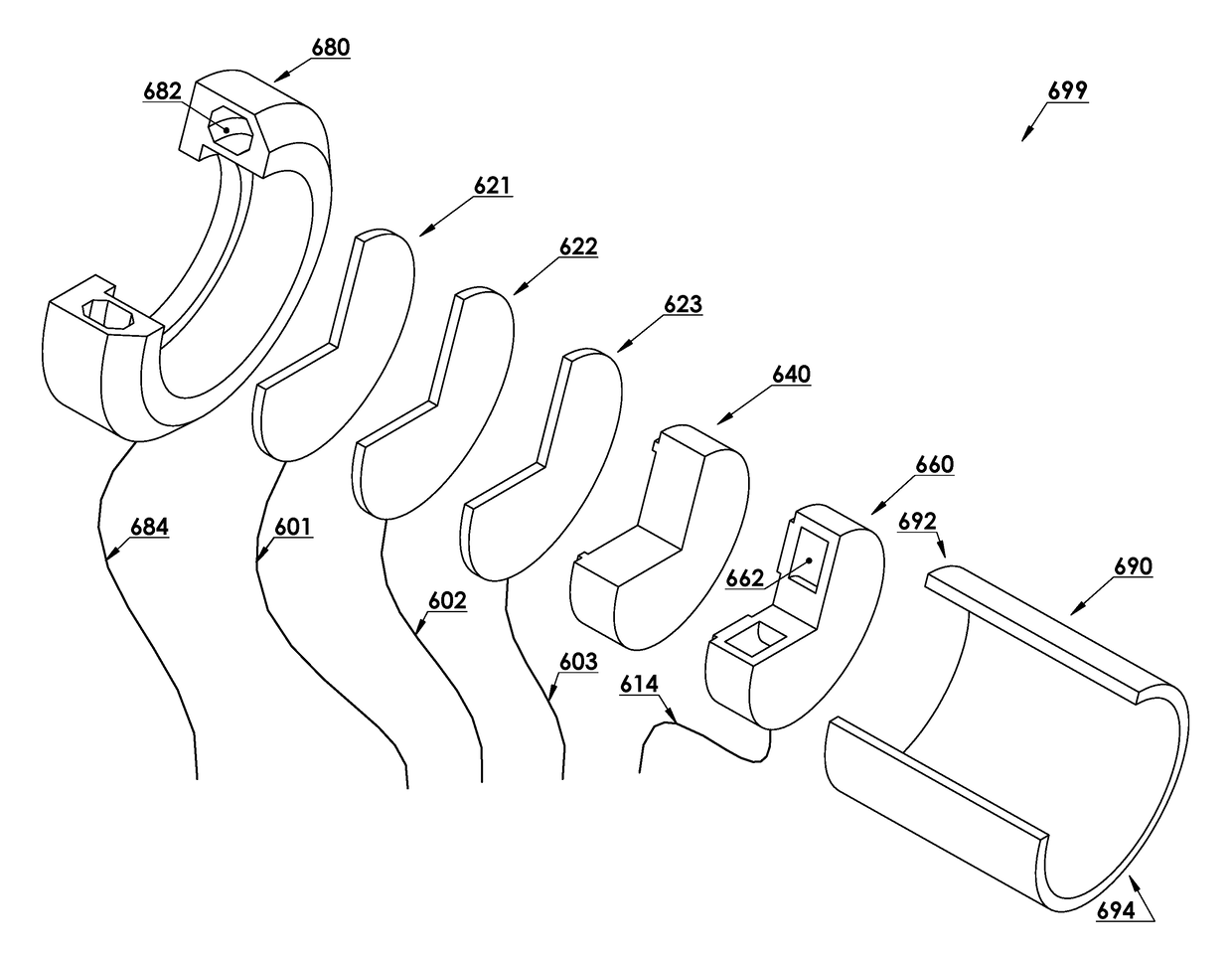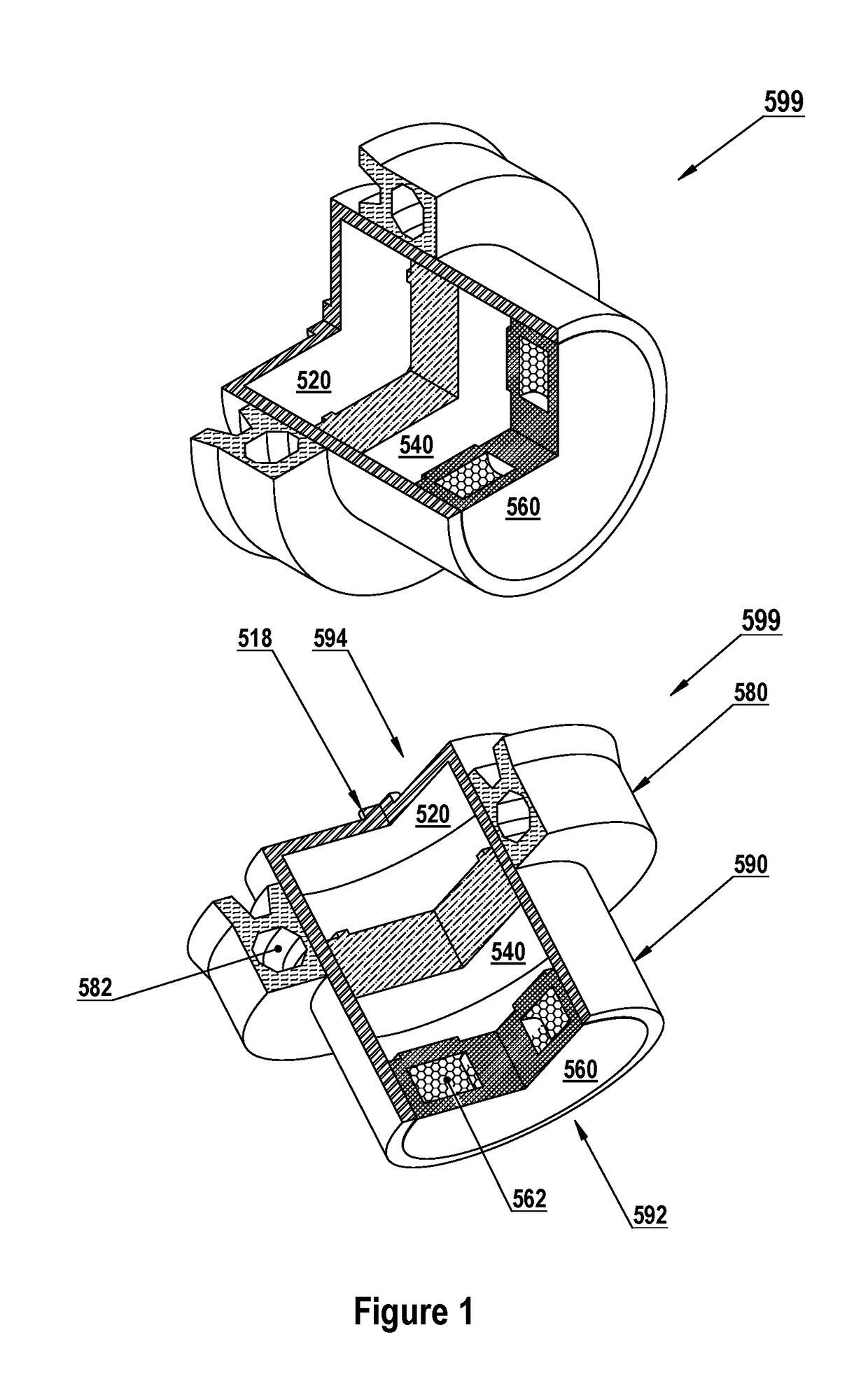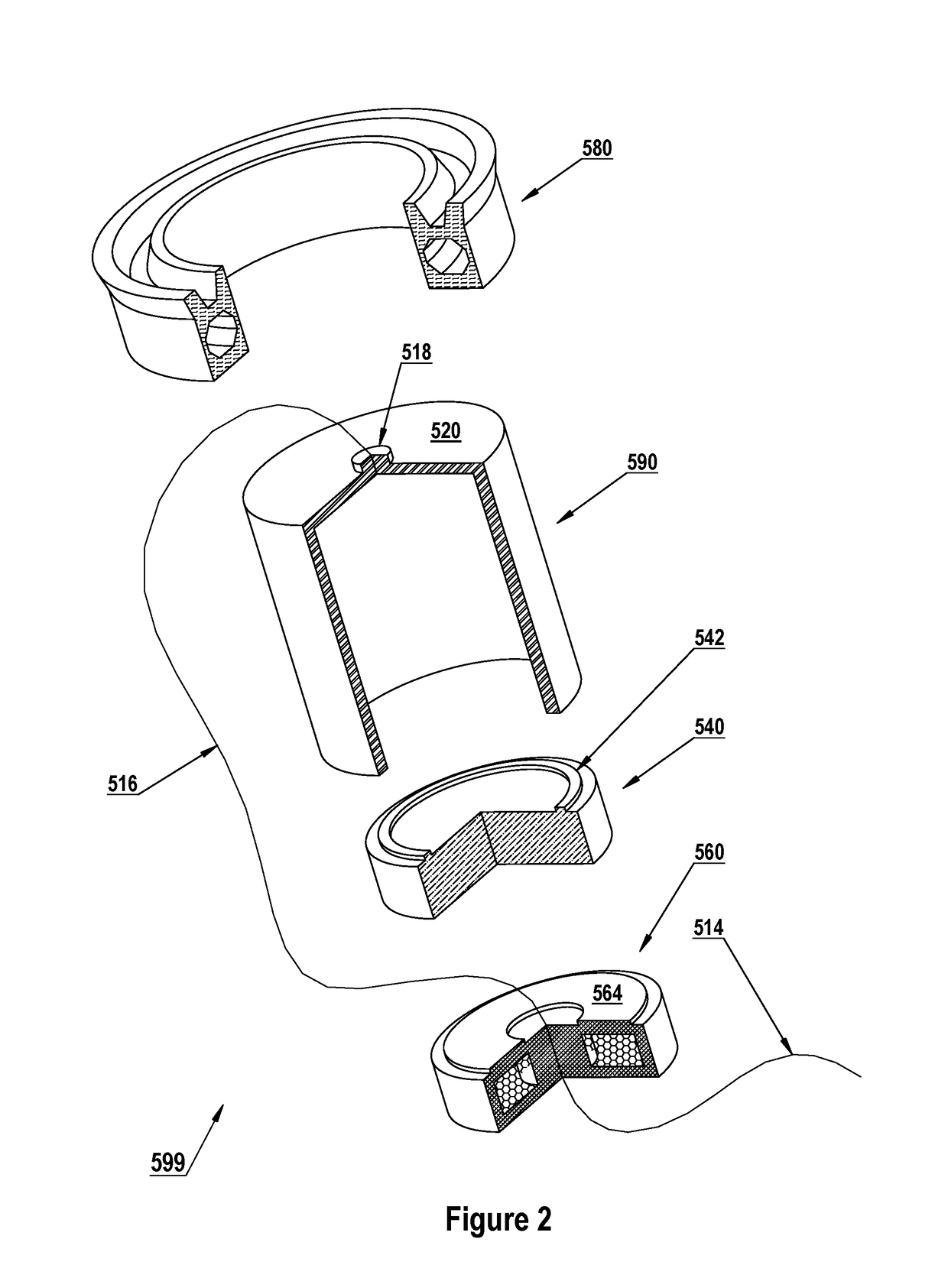Adaptive Lithotripsy For Cancer Risk Reduction
a cancer risk and lithotripsy technology, applied in the field of cancer risk reduction, can solve the problems of significant collateral vibration damage, achieve the effects of reducing collateral tissue damage, facilitating and facilitating the maximization of stimulation efficiency
- Summary
- Abstract
- Description
- Claims
- Application Information
AI Technical Summary
Benefits of technology
Problems solved by technology
Method used
Image
Examples
Embodiment Construction
[0124]FIGS. 1 and 2 illustrate partial schematic 3-dimensional views of an adaptive stimulator of class 599, FIG. 2 being an exploded view. Numerical labels may appear in only one view. A hollow cylindrical housing 590 has a longitudinal axis, a first end 594, and a second end 592. First end 594 is closed by fluid interface 520 for transmitting and receiving vibration. Fluid interface 520 comprises at least one accelerometer 518 for producing a vibration electrical signal (i.e., an accelerometer-generated feedback signal) representing vibration transmitted and received via fluid interface 520.
[0125]Electromagnetic hammer driver 560 (comprising a field emission structure which itself comprises electromagnet face 564 and electromagnetic controller 562) reversibly seals second end 592, and hammer (or movable mass) 540 is longitudinally movable within cylindrical housing 590 between electromagnetic hammer driver 560 and fluid interface 520. In some embodiments, hammer 540 may itself be ...
PUM
 Login to View More
Login to View More Abstract
Description
Claims
Application Information
 Login to View More
Login to View More - R&D
- Intellectual Property
- Life Sciences
- Materials
- Tech Scout
- Unparalleled Data Quality
- Higher Quality Content
- 60% Fewer Hallucinations
Browse by: Latest US Patents, China's latest patents, Technical Efficacy Thesaurus, Application Domain, Technology Topic, Popular Technical Reports.
© 2025 PatSnap. All rights reserved.Legal|Privacy policy|Modern Slavery Act Transparency Statement|Sitemap|About US| Contact US: help@patsnap.com



